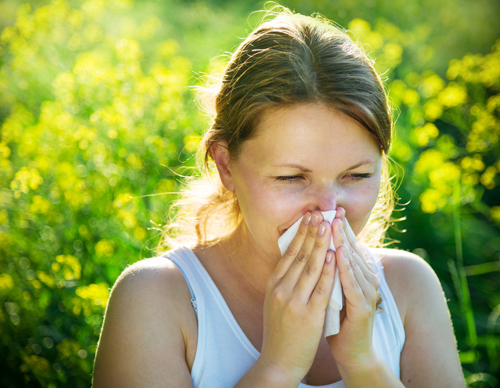|
If you suffer from spring allergies, then the arrival of warmer weather means you have to get prepared. Thankfully, there are some steps you can take to ease your symptoms. But first, understanding what causes spring allergies and how the symptoms manifest can help you understand why these steps are beneficial.
What Causes Spring Allergies?
Allergies are triggered by the immune system’s response to pollen floating around in the air. During the spring, the trees, grass, flowers, and weeds all release pollen for the purposes of fertilization. When this pollen makes its way into your nasal passage, the body may see it as a threat and your immune system will kick into gear trying to attack and expel it.
About 20 to 30 percent of Canadians experience seasonal allergies. Allergies are genetic, and you are more likely to have them if one or both of your parents do as well. Sometimes, they can manifest in childhood, but other people may not experience symptoms until their adult years.
Spring Allergy Symptoms
Spring allergy symptoms will vary from individual to individual, but usually include:
• Stuffy, runny, or itchy nose
• Red, puffy, itchy, or watery eyes
• Dark circles under eyes
• Scratchy throat
• Sneezing
• Itchy ears
Many people mistake their allergy symptoms for a cold, or they just assume that they are feeling under the weather. If you are unsure whether you have seasonal allergies, you can ask your doctor to refer you for an allergy test.

How to Ease Spring Allergies
If you know or suspect that you might be allergic to pollen, then there are some precautions you can take to ease your seasonal suffering. Here are three of the top strategies to try.
1. Limit your time outside
You don’t want to spend the warm months of the year cooped up inside but, if you suffer from particularly bad allergies, then it may be better to limit your time outside when pollen levels are high. Your local forecast should note the current pollen level, which is typically higher on dry and windy days. Pollen levels are also typically lower after it rains.
2. Keep your indoor air clean
Allergy sufferers can usually find relief at home, but only if their indoor air is free of pollen. Turn your home into a refuge by keeping your windows shut and running a quality air purifier that uses a HEPA filter to catch any airborne pollen. A vacuum cleaner outfitted with a HEPA filter will also capture any pollen that has settled on the ground.
3. Try an allergy medication
There are many different types of over-the-counter antihistamine medications available to help control spring allergies. If you need quick relief from nasal stuffiness, then you can take a decongestant as well. Make sure you are following instructions for use and not taking any medications longer than recommended. If your allergies are severe, your doctor may alternatively provide you with prescription medication or allergy shots.
Seasonal allergies can be a pain, but with the right precautions and strategies, you can limit how much they interfere with your day-to-day life. Once the pollen levels decrease, you’ll feel good as new.
|